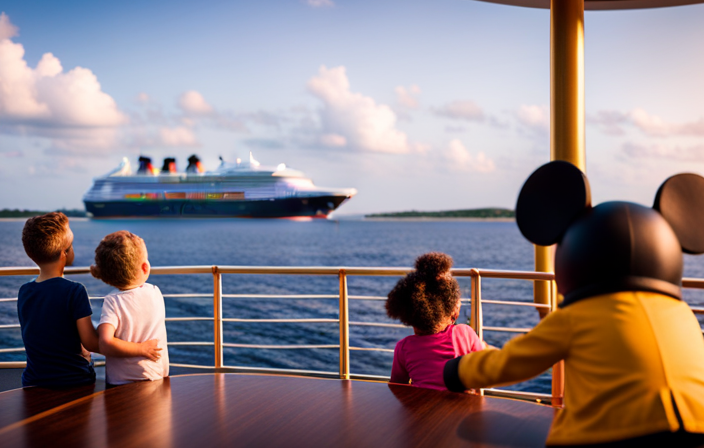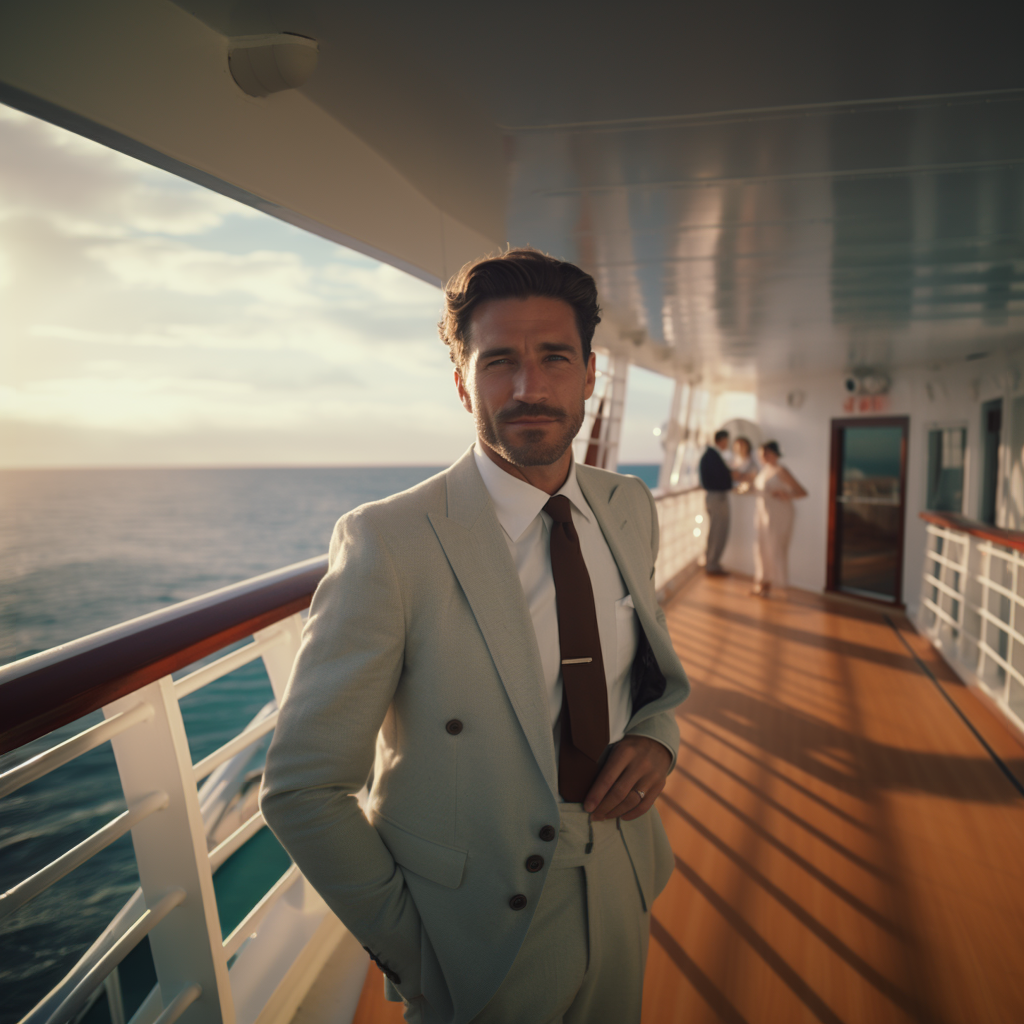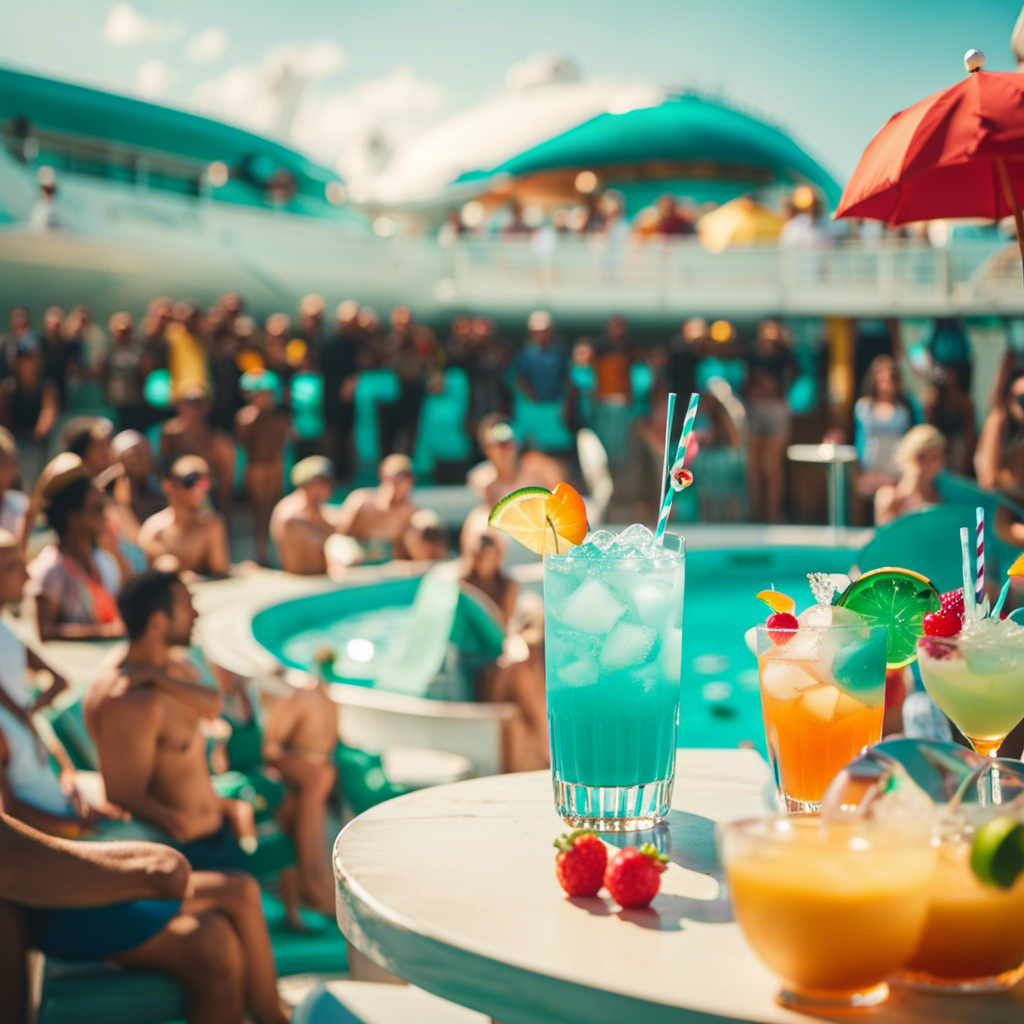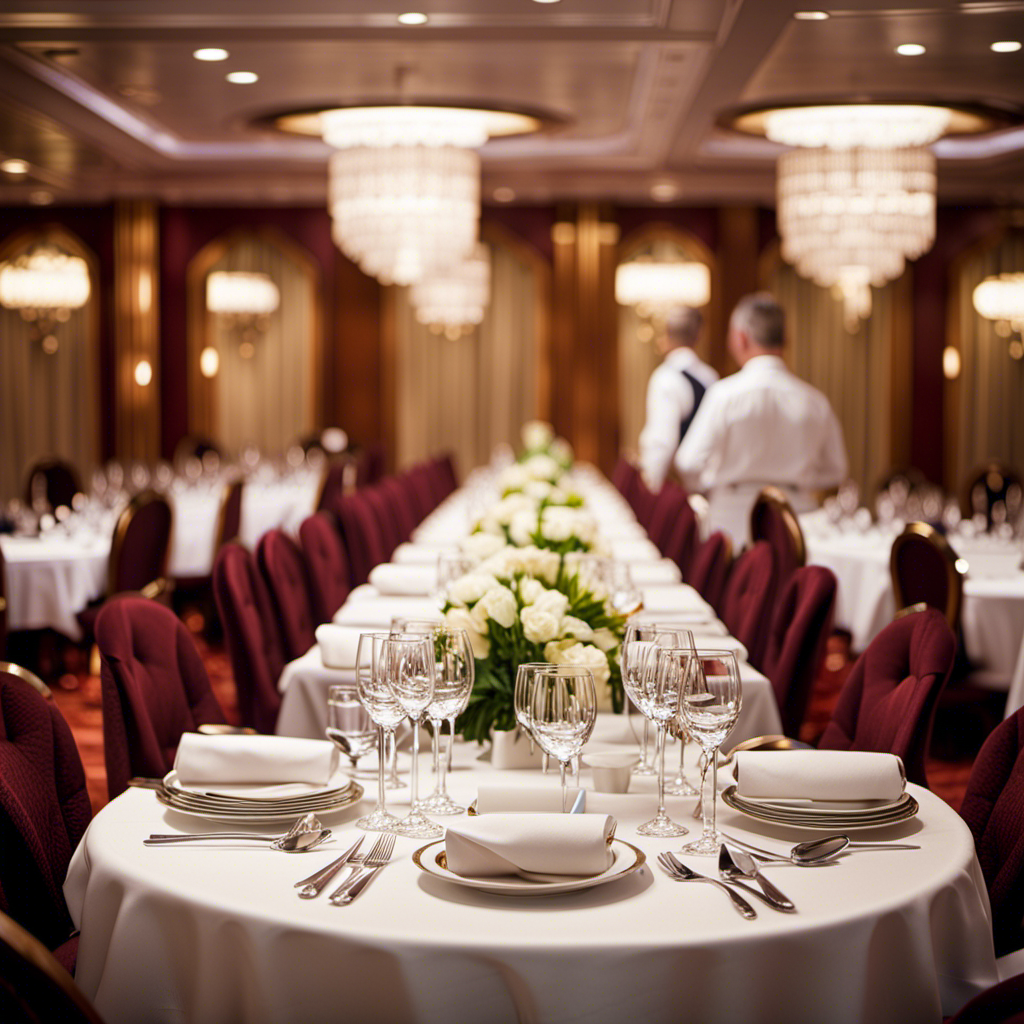Picture embarking on an enchanting voyage with captivating characters, exciting escapades, and lasting memories. That’s precisely what you’ll encounter on a Disney Cruise. With my passion for all things Disney and extensive travel experience, I am here to help you navigate through the age restrictions required for this extraordinary journey.
Whether you are bringing infants, children, teens, or adults, Disney Cruise has something for everyone. From special considerations for pregnant women to planning a birthday celebration, I will help you navigate the ins and outs of cruising with Disney.
With recommended itineraries for different age groups and tips to ensure a truly magical experience, this article will be your go-to resource for all things Disney Cruise.
So, grab your Mickey ears and prepare to set sail on a journey of a lifetime with Disney Cruise.
Key Takeaways
- Disney Cruise age policies require guests to be at least 6 months old at embarkation, with some itineraries having minimum age requirements of 1 year or older.
- Children under 18 must be accompanied by a parent or guardian, and each stateroom must have at least one guest who is 18 or older.
- Staterooms have amenities for infants, and there is a nursery available for children aged 6 months to 3 years.
- Age-appropriate activities and entertainment are provided for children, teens, and adults, ensuring a fun and enjoyable experience for guests of all ages.
Overview of Disney Cruise Age Policies
Get ready to set sail on a Disney cruise and discover the magical age policies that will make your family vacation unforgettable!
When it comes to age requirements for Disney cruises, there are a few important things to keep in mind.
-
First and foremost, all guests must be at least 6 months old at the time of embarkation. This is to ensure the health and safety of the youngest cruisers.
-
Additionally, certain itineraries may have minimum age requirements of 1 year or older.
-
It’s also worth noting that children under the age of 18 must be accompanied by a parent or guardian.
As for booking policies, each stateroom must have at least one guest who is 18 years or older.
Now that you know the age requirements, let’s dive into the specifics for infants and toddlers.
Age Requirements for Infants and Toddlers
Babies and little ones can join in on the magic of sailing the high seas with Mickey and friends on a magical voyage. Here are four things you should know about infant accommodations and toddler activities on a Disney Cruise:
-
Staterooms are equipped with convenient amenities for infants, such as cribs and diaper disposal units, to ensure a comfortable stay for the whole family.
-
Disney Cruise offers It’s a Small World Nursery, a dedicated space for little ones aged 6 months to 3 years, where they can play, nap, and be cared for by trained professionals.
-
Toddlers can enjoy age-appropriate activities and entertainment options, including character meet-and-greets, splash zones, and interactive play areas like the Nemo’s Reef water play area.
-
Disney Cruise also offers onboard babysitting services for parents who want to enjoy some adult time, with trained counselors available to engage and entertain children.
Now, let’s move on to the next section about age requirements for children and teens.
Age Requirements for Children and Teens
Children and teens aboard the ship can look forward to age-appropriate activities and entertainment options. Disney Cruise Line offers a variety of experiences for different age groups to ensure everyone has a fantastic time. Let’s take a look at the age restrictions and travel documents required for children and teens.
| Age Group | Age Restrictions | Travel Documents Required |
|---|---|---|
| Children | 3-12 years old | Birth certificate |
| Tweens | 11-14 years old | Birth certificate |
| Teens | 14-17 years old | Government-issued ID |
Parents can rest assured that their children will have a blast participating in age-specific activities and making new friends. From themed parties to karaoke contests and sports tournaments, there is always something exciting happening onboard.
Now, let’s move on to the age requirements for adults and the additional documents they need to bring.
Age Requirements for Adults
Are you ready to embark on a magical adventure and discover the age requirements for adults on this incredible voyage? As an adult traveler, there are certain guidelines to keep in mind when planning your Disney cruise experience. Here are some important details to consider:
-
Traveling alone: If you’re a solo traveler, you must be at least 18 years old to book a Disney cruise.
-
Group travel: If you’re traveling with a group of adults, all members must be at least 18 years old to book a Disney cruise.
-
Traveling with multiple generations: Now that we’ve covered the age requirements for adults, let’s delve into the exciting world of traveling with multiple generations.
By following these age requirements, you can ensure a fantastic and memorable Disney cruise experience. So, let’s now explore how Disney cruises cater to the needs of multi-generational families and create unforgettable memories for everyone involved.
Traveling with Multiple Generations
Embarking on a magical voyage with multiple generations allows for a truly unforgettable Disney cruise experience. Disney understands the importance of multi-generational travel and strives to provide activities that appeal to all ages.
Whether it’s grandparents, parents, or children, there are endless family-friendly activities to enjoy onboard. From character meet-and-greets to Broadway-style shows, there is something for everyone. The little ones can participate in youth clubs and splash around in the pools, while the adults can relax at the spa or indulge in exquisite dining options.
Disney cruises offer a perfect balance of fun and relaxation for every member of the family.
Now, let’s explore the booking policies for minors, ensuring a smooth and hassle-free experience for families of all sizes.
Booking Policies for Minors
To ensure a stress-free family voyage, it’s important to familiarize yourself with the booking policies for minors on a Disney cruise. Here are three key booking restrictions to keep in mind:
-
Age requirements: Disney cruise lines have specific age requirements for unaccompanied minors. Children must be at least 18 years old to book a stateroom without an accompanying adult.
-
Parental consent: For children under 18 years old, parental consent is required to book a Disney cruise. This ensures that parents are aware of their child’s travel plans and can provide necessary authorization.
-
Supervision: It’s important to note that while Disney cruises offer a variety of kids’ clubs and activities, parents are responsible for supervising their children at all times. This ensures the safety and well-being of all passengers, especially minors.
Understanding these booking policies and restrictions will help you plan your Disney cruise smoothly.
Now, let’s explore the special considerations for pregnant women.
Special Considerations for Pregnant Women
Navigating the journey while expecting brings forth a unique set of factors for pregnant women on a Disney cruise. It is important to note that Disney Cruise Line has specific policies and restrictions in place for pregnant guests.
Generally, women who are 24 weeks or more into their pregnancy at the time of sailing are not allowed to embark on the cruise. Additionally, certain cruise activities, such as the use of whirlpools and certain water slides, may not be recommended for pregnant women.
However, there are still plenty of enjoyable activities for expectant mothers to partake in, such as character meet and greets, live shows, and spa treatments. These options ensure that pregnant women can still have a magical experience on a Disney cruise.
Looking forward, let’s now explore planning a birthday or special celebration on a Disney cruise.
Planning a Birthday or Special Celebration on a Disney Cruise
Celebrate your special day in style by planning a birthday or special celebration on a Disney cruise. With a variety of birthday party ideas and special occasion packages, Disney cruises offer an unforgettable experience for guests of all ages.
Whether you’re celebrating a milestone birthday or simply want to make your special day extra memorable, Disney has you covered. From personalized decorations and themed parties to gourmet dining and exclusive character meet-and-greets, there’s something for everyone.
Imagine blowing out your candles with Mickey Mouse or dancing the night away with your favorite princess. It’s a magical way to create lasting memories.
And as we transition to the next section about recommended itineraries for different age groups, you’ll discover even more ways to make your Disney cruise experience truly unforgettable.
Recommended Itineraries for Different Age Groups
Embarking on a Disney cruise is like setting sail on a voyage tailored to each age group. Recommended itineraries cater to the unique interests and preferences of every guest. Disney Cruise Line offers a variety of itineraries designed to ensure a magical experience for all. Here are three recommended itineraries for different age groups:
-
For families with young children, the Disney Fantasy offers a seven-night Eastern Caribbean cruise. This itinerary includes stops at Castaway Cay and other exciting ports of call.
-
Teens will love the Disney Dream’s four-night Bahamian cruise. This itinerary includes a stop at Disney’s private island, Castaway Cay. Onboard, there are plenty of activities and entertainment just for them.
-
Adults looking for a relaxing getaway can enjoy a seven-night Alaskan cruise on the Disney Wonder. This itinerary is complete with stunning scenery, gourmet dining, and adult-exclusive areas.
These recommended itineraries are just a taste of the incredible experiences available on a Disney cruise. In the next section, we’ll explore tips for ensuring a magical experience for all ages.
Tips for Ensuring a Magical Experience for All Ages
To make the most of your magical adventure on a Disney cruise, here are some helpful tips that will ensure a memorable experience for everyone on board.
First and foremost, Disney cruises are committed to ensuring accessibility for disabled individuals. They have accessible staterooms, elevators, and ramps throughout the ship, making it easy for everyone to navigate and enjoy all the amenities.
Additionally, their dining options cater to even the pickiest eaters. With a wide range of restaurants and menus, you can find something to satisfy every palate. Whether you have dietary restrictions or just a selective eater in your group, the Disney cruise staff will go above and beyond to accommodate your needs.
So sit back, relax, and let the magic unfold as you embark on a Disney cruise that truly caters to everyone’s needs.
Frequently Asked Questions
What are the dining options available for children and teens on a Disney cruise?
Children on a Disney cruise can enjoy a specialized children’s menu with kid-friendly options like chicken nuggets and macaroni and cheese. Teens also have their own dining options, with trendy choices like burgers and pizza.
Can adults participate in the children and teen activities onboard?
Yes, adults can participate in the fun-filled children and teen activities onboard. However, there may be age restrictions for live shows and entertainment, so it’s best to check with the cruise staff.
Are there any restrictions on pregnant women for participating in shore excursions?
Pregnant women may have restrictions on participating in shore excursions due to safety concerns. It is recommended to consult with your healthcare provider and the cruise line for specific guidelines and restrictions.
Are there any age limits for attending the live shows and entertainment onboard?
Step right up to the enchanting world of Disney Cruise Line! While the magic knows no bounds, please note that certain live shows and entertainment onboard may have age restrictions for our younger guests.
Can grandparents or other family members accompany minors on a Disney cruise without their parents?
Yes, grandparents and other family members can accompany minors on a Disney cruise without their parents. Disney cruises offer special programs and activities for children, ensuring a safe and enjoyable experience for all.
Conclusion
In conclusion, embarking on a Disney Cruise is an enchanting experience for all ages. From infants to adults, there are age-specific activities and amenities to ensure everyone has a magical time.
Whether you’re exploring the Caribbean or sailing to Alaska, the Disney Cruise age policies cater to a wide range of age groups.
So, whether you’re a little one meeting princesses or an adult indulging in fine dining, a Disney Cruise promises an unforgettable journey.
So pack your bags and prepare for a voyage filled with wonder and joy!
Alfons is the visionary leader and driving force behind Voyager Info’s success. As the Editor in Chief, he brings a wealth of experience and an unwavering passion for travel to the helm of our cruise-centric platform.
With a lifelong fascination for exploring new horizons, Alfons discovered his love for the ocean and cruising at a young age. From sailing across pristine Caribbean waters to embarking on daring expeditions to far-flung destinations, he has amassed a treasure trove of first-hand experiences in the world of cruising.











